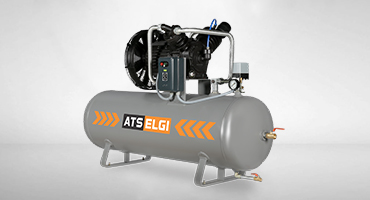Direct Drive Compressor
What is direct Drive Air Compressor?
In a belt-driven air compressor, a belt connects the motor to the compressor pump — as the motor turns, the belt turns with it, activating the pump. In a direct drive motor, as the name suggests, the motor attaches directly to the compressor crankshaft.
Some Basic Technical Terms for Selecting Compressor:
- Horsepower (HP)
- Air Pressure (PSI)
- Cubic Feet Per Minute (CFM)
- Tank Sizes
- Single Stage or Two Stage
- Direct Drive or Belt Drive, Oil or Oil-Less
- Duty Cycle
What is CFM or Airflow?
- The free air delivery in an air compressor is measured in cubic feet per minute (CFM). It is the amount of air generated by the air compressor at a certain pressure level.
- Another parameter considered along with CFM is the amount of pressure that the air compressor can offer, which is measured in bar, kg/cm2 or PSI.
Energy Efficiency
- Zero Transmission loss with elimination of belt drive
- Direct drive technology by design offers 7% (avg.) more flow than competition for the same motor rating, yielding highest power saving
- Duplex setup offers demand based utilization of power; possibility of saving upto 50% of power. In case of10 HP, Can be used as a 5 HP or a 10 HP
Higher Reliability
- Lower speed with high efficient 6 pole low speed motors and lesser stroke length by design ensure reduced friction, thereby longer durable internal parts
- No belt slip and belt tension Correction required due to direct drive transmission, no manual intervention required
- Agri Starters with higher tolerance to Voltage fluctuation offered to ensure
Special Features
- Duplex – Two indigenous top blocks. During maintenance one top block can be utilized while other is being serviced
- Noise levels close to home appliances, supporting installation inside the shop Floor
- Direct drive design and compact crank case results in smaller foot print, allows for the placement of the compressor inside factory premises
Compressor Reliability
- With robust windings, motors are Rated for higher (recommended 12) start/stop per hour, longer motor life even with fluctuating demand
- Less oil fill requirement owing to optimized crank case and modular crank shaft design resulting in 70% Lower Oil change cost
- Maintenance frequency similar to belt drive even with prolonged everyday use (Upto 12 hours a day)
- With reduced air temperature @ outlet, Moisture and Oil carryover are reduced, which ensures longer life for downstream equipment and reduced maintenance on end user equipment (Filters, Dryers, FRL units etc.)


